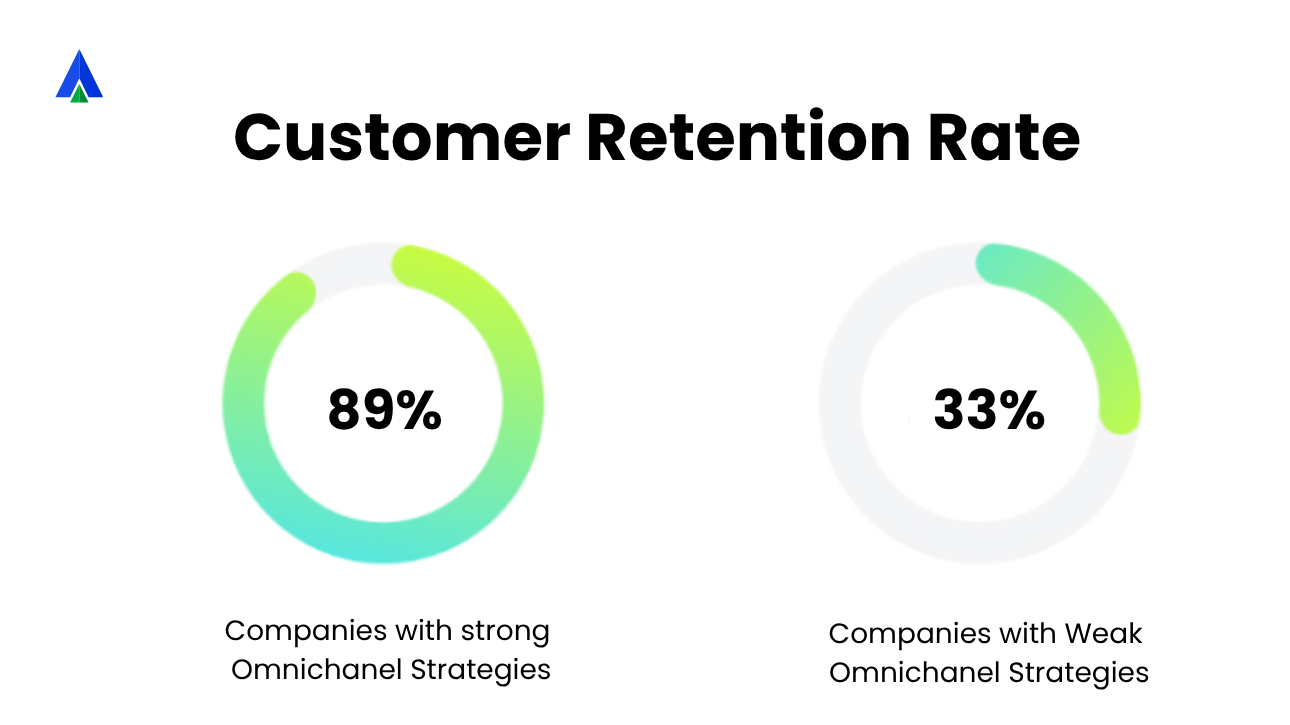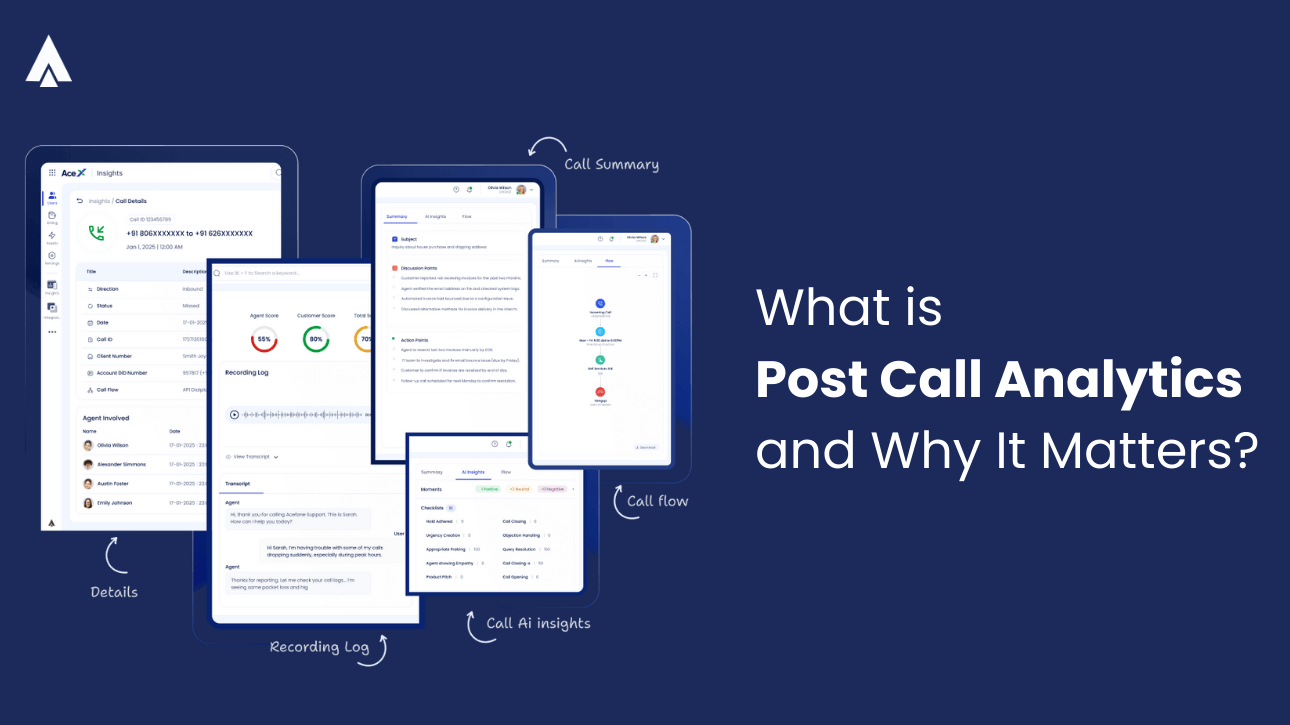Change is inevitable.
Over the years, customer demands and customer expectations have changed and evolved considerably. Moreover, the concept of consumer experience has taken on a whole new dimension.
In this saturated industry, quality of service is often a key differentiator for the company. Automated operations and digitized customer service have taken over. The future calls for a complete transformation in the way contact center operations.
However, the performance of your contact center agents results in some crucial factors like Customer Satisfaction Score (CSAT), first call resolution, reduced wait times and most importantly, responsiveness to buyer needs.
Keeping in mind the continuous change in the strategy, let’s take a look at the most popular contact center trends we’re expecting for the upcoming months and years.
Trend #1: Beyond IVR
Remember when IVR systems meant navigating seven menu levels just to speak with the wrong department? Those days are ending. AI-powered intelligent routing is one of the most popular contact center trends from rules-based logic to predictive understanding of customer intent and context.
Modern contact center automation doesn’t just route calls based on button presses. It analyzes conversation patterns, sentiment, customer history, and business context in real-time to make sophisticated decisions.
Sentiment analysis identifies frustrated customers and prioritizes them in the queue. Predictive routing algorithms match customers with the right call center agents based on issue complexity, customer lifetime value, and agent expertise. AI copilots provide real-time next-best-action recommendations, surfacing relevant knowledge articles and suggesting responses as agents navigate complex interactions.
The business impact is measurable and significant. Organizations implementing AI-powered routing report reducing average handle time by 20-30% while simultaneously improving customer satisfaction scores
Trend #2: Omnichannel Interactions
Here’s where most companies get tripped up: they think having phone, email, and chat makes them omnichannel. It doesn’t. That’s multichannel, separate silos that don’t talk to each other. True omnichannel contact center solutions means unified customer context regardless of which of communication channels a customer engages with.
The distinction matters enormously. In a multichannel setup, a customer starts a chat conversation. They then call an hour later, only to repeat everything because the phone agent can’t see the chat transcript.
In an omnichannel environment, the agent answering that call sees the complete interaction history across every touchpoint. They can easily view previous calls, chat sessions, and email exchanges.
Modern cloud contact center software provides unified agent desktops that surface this complete context in real-time. When customers switch channels, the conversation continues seamlessly. The agent doesn’t waste time gathering information; they pick up exactly where the last interaction ended.
The business impact of this contact center trend is also clear. Companies with strong omnichannel strategies retain 89% of their customers, compared to just 33% for those with weaker approaches. This shows how crucial getting your omnichannel contact center right is for driving revenue and customer loyalty.

Trend #3: Reactive Support to Predictive Outreach
One of the most powerful contact center trends is the one that prevents a problem before it becomes a complaint. Forward-thinking organizations are shifting from reactive support models to proactive and predictive engagement strategies. They are supposed to anticipate customer needs and trigger interventions before issues escalate.
This isn’t about sending generic email blasts. It’s about using analytics and behavioral signals to identify specific situations requiring outreach. Proactive alerts that notify customers of service outages, shipment delays, or payment reminders before they pick up the phone.
The technology is becoming increasingly accessible. Contact center and CRM integration has become a power-packed duo for customer data management that drives predictions. Real-time analytics platforms process behavioral signals as they occur. Automated workflows trigger outreach based on specific customer actions or inactions, all without manual intervention.
The shift from “how can I help you?” to “we noticed you might need this” represents a maturation of customer experience strategy. It requires infrastructure capable of processing signals in real-time, orchestrating outreach across channels, and measuring impact on customer lifetime value.
Trend #4: Post-Conversation Analytics
Every customer conversation is a goldmine of business intelligence. But most organizations let that value slip through their fingers the moment the call ends. Enter Post conversation analytics – a transformative technology that turns raw interaction data into strategic insights.
Traditional quality assurance meant randomly sampling 2-3% of calls and manually scoring them weeks after they occurred. Post-conversation analytics powered by AI and speech analytics examines 100% of interactions across every channel (call, chat, email). The technology then transcribes conversations, identifies key themes, detects emotional sentiment and flags compliance risks.
Trend #5: Empowered Agents Deliver Better Outcomes
Here’s a reality check: contact center agent turnover rates hover around 30-45% annually. This costs businesses an average of $10,000-$20,000 per agent in recruitment, training, and lost productivity. The exodus isn’t just about compensation; it’s about working conditions. And technology is either the problem or the solution.
Modern cloud contact center platform fundamentally improve agent experience by addressing the friction points that drive burnout. Intuitive, unified interfaces reduce cognitive load, eliminating the need to toggle between multiple systems. AI assistants handle routine tasks like data entry and basic information retrieval. This frees human agents to focus on complex problem-solving that requires human judgment and empathy.
With the power of AI, you can ensure your agents are performing well and working happily.
Looking forward
With constant advancements in cloud communications technology and ever-evolving client demands, call centers need to remodel their support strategies. Thus, businesses must focus on extending high-quality service options.
Next-gen contact centers must emphasize on:
- Providing fast, reliable and accurate information across all channels.
- Increasing efforts to achieve customer satisfaction and retention.
- Reduce contact center complexity and create easy and accessible forums.
- Provide an overall smooth user experience.
Want an executive-ready scorecard of your contact center trends maturity, plus a step-by-step rollout plan? Book a consultation with Acefone’s experts to see how cloud-based contact centers, AI-powered routing, and real-time analytics can lift CSAT, FCR, and revenue within one quarter.
FAQs
AI-powered intelligent routing and automation, true omnichannel orchestration, proactive engagement, real-time analytics, and agent experience are redefining performance. The focus is on lowering handle time, raising first-contact resolution, and forecasting demand. Cloud-based contact centers provide elastic scale, compliance, and faster iteration, turning service from a cost center into a measurable growth engine.
AI now predicts intent, prioritizes queues, and recommends the next best actions. Conversational AI resolves routine queries through chat, voice, and IVR, while copilots summarize interactions and automate wrap-up. Leading contact center providers combine AI with human judgment to improve FCR further, deflect repeat contacts, personalize outreach, and coach agents with searchable call transcripts.
Multichannel offers many communication options, but data and context live in silos. Omnichannel orchestration unifies history across phone call, live chat, email, SMS, and social media. This enables seamless channel switching without repetition. Agents can view a single timeline, reducing customer effort, boosting conversion, and shortening resolution times while improving compliance and reporting.
Beyond AHT and CSAT, leaders track first-contact resolution, containment in self-service, sentiment trends, transfer rates, queue abandonment, and revenue influence. Real-time analytics feed forecasting and scheduling, while speech and text analytics flag compliance risks and coaching opportunities. Tie KPI movements to measurable business outcomes: churn reduction, expansion, collections, and cost-to-serve.
Start with a 30-day audit of channels, tech, and KPIs. Quantify pain: handle time, repeats, outages, attrition, compliance risk. Model Total Cost of Ownership and Return On Investment for cloud migration, highlighting elastic scale and improved FCR. Pilot one queue, validate gains, secure executive sponsorship, then expand with structured training, change management, and formal governance.














